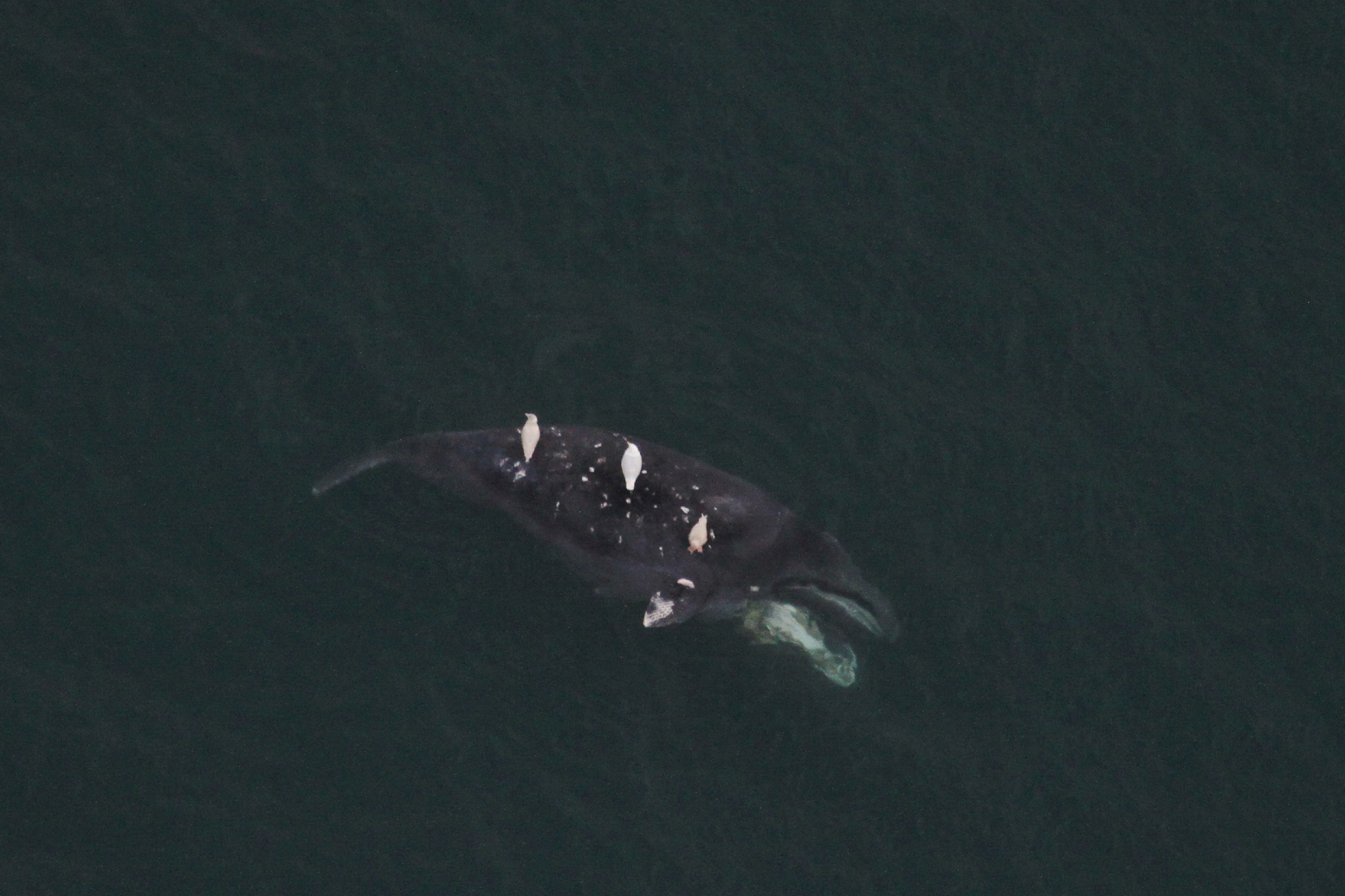Bite wounds confirm it: Killer whales are attacking bowheads in Alaska’s Chukchi and Beaufort seas
Previous studies had already suggested killer whales had begun attacking bowheads in the Arctic, but a new study finds direct evidence.

For years, the bodies of bowhead whales in Alaska’s Arctic waters have increasingly borne a new kind of scars — scars that are also a sign of climate change.
Previously, a long-term study had shown that the bowhead whales harvested by Inupiat hunters were showing up more frequently with wounds that appeared to have been inflicted by killer whales, which are moving north as waters warm and sea ice retreats.
Now there is direct evidence that northward-moving killer whales are preying on bowheads summering in the eastern Chukchi and western Beaufort seas.
In the first comprehensive study of non-whaling mortality of bowheads in the Alaska waters of the Chukchi and Beaufort seas, scientists found that killer whale predation has become the top cause of non-harvest bowhead death there.
Through the examination of aerial imagery from annual surveys conducted since 2009, the scientists concluded that 18 of the 33 dead whales discovered were likely the victims of killer whales.
The study is by scientists with the National Oceanic and Atmospheric Administration, the University of Washington and the North Slope Borough. It is published in the journal Polar Biology.
The first major clue came in 2015 when the carcass of a bowhead calf was discovered with tears matching killer-whale teeth.
Examination of the other dead whales found several others with tell-tale signs of killer-whale predation, like “missing jaws, missing tongue, semi-circular bite marks, or rake marks,” study co-author Raphaela Stimmelmayr, a wildlife veterinarian with the North Slope Borough, said in a statement issued by NOAA.
The new study builds on the previous research that documented the increasing trend of scarring on harvested bowheads. But those harvested whales were animals that survived their killer whale attacks, “and it is impossible to determine when or where the unsuccessful attack occurred,” lead author Amy Willoughby of NOAA and the University of Washington, said by email.
“The whales in our study have fresh injuries consistent with killer whale predation which allows us to pinpoint the general location of the successful attack, in this case the northeastern Chukchi and western Beaufort seas,” she said.
Though the key piece of evidence was the dead calf found in 2015, killer whales do not seem to be focusing their predation on the very small bowheads, she said. “Of the 18 bowhead whale carcasses classified as probable killer whale predation, only eight were small whales considered to be calves or yearlings.”
Yet to be determined is what significant impact, if any, the northward movement of killer whales will have on the population of bowheads swimming in the Bering, Chukchi and Beaufort seas, Willoughby said.
Impacts could come in different ways, she said. “Killer whale presence and predation has the ability not only to remove individual bowhead whales from the population but disruption of feeding opportunities and movement away from killer whales comes at an added energy expense for bowheads,” she said.
Bowheads might change their migrations, moving north “into the late summer-autumn sea ice edge where Pacific killer whales are not known to range,” the study said. Or they could hug closer to the shoreline, a predator-avoiding strategy observed elsewhere, the study said.
The Inupiat people of northern Alaska hunt bowheads. Bowhead meat is an important part of the Inupiat diet, even in modern times, and whaling is a key part of Inupiat culture.
Sea ice has long been a protective barrier for bowheads, and the Arctic waters off Alaska had long been considered a safety zone where killer whales were unable to attack bowheads.
“Arctic killer whales don’t like sea ice, unlike those in Antarctic waters. Once the bowheads get into the ice, they’re safe from killer predation,” bowhead expert Craig George, retired senior biologist at the North Slope Borough Department of Wildlife Management, said in the NOAA statement. George was involved in the earlier long-term study of bowhead scarring but was not an author of the new study.
Now, with less ice available and a shorter freeze season, the killer whales have access to bowheads — on the Atlantic side of the Arctic as well as the Pacific side.
In Kugaaruk, a community in the Canadian territory of Nunavut, hunters traveling a beach this fall found four dead bowheads with wounds that appeared to have been inflicted by killer whales – the first discovery of that kind in that area.
The increasing presence of killer whales in the Canadian Arctic is creating more threats to narwhals, scientists say. A University of Manitoba study published earlier this year estimated that killer whales kill over 1,000 narwhals a year.